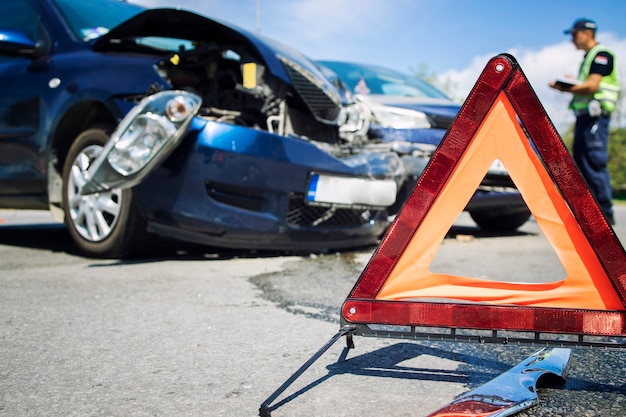
In the Philippines, road safety is a pressing issue that demands urgent attention. The Global Status Report on Road Safety paints a sobering picture of the country’s road safety situation, revealing that despite efforts to improve infrastructure and traffic enforcement, road traffic deaths continue to significantly impact lives in both urban and rural areas.
The Global Status Report: A Snapshot of Road Safety in the Philippines
WHO Global Status Report on Road Safety in the Philippines
According to the World Health Organization’s Global Status Report on Road Safety, the Philippines records a road traffic fatality rate of 9.7 deaths per 100,000 people. While this figure is lower than the global average of 18 per 100,000, it still represents a significant portion of preventable deaths in the country.
Metro Manila
In Metro Manila, home to one of the most congested traffic systems in Southeast Asia, and in rural areas, where infrastructure can be lacking, the risk of road accidents remains high. The report underscores that road traffic deaths are among the leading causes of death in the Philippines, especially among young adults.
This reflects a broader global trend, but one that is exacerbated in the Philippines by a combination of factors, including inadequate enforcement of traffic laws, the prevalence of unsafe vehicles, and limited public awareness of safe driving practices.
Understanding the Challenges on Philippine Roads
The archipelago’s diverse and often challenging road network contributes significantly to the prevalence of road accidents. A substantial number of road traffic deaths occur annually, firmly establishing road safety in the Philippines as a paramount public health concern.
The dynamic interplay of various vehicle types – from private cars and ubiquitous motorcycles to heavy trucks – on the same portion of road often amplifies the risk of collisions. This intricate environment underscores the critical need for heightened awareness and adherence to safe driving practices by all.
Several interconnected factors shape road safety in the Philippines. The effectiveness of traffic laws, the quality and maintenance of road infrastructure, and perhaps most crucially, the behavior of individual drivers all play pivotal roles in determining the likelihood of accidents.
While the Philippines has demonstrated some progress in addressing these issues, a more concerted and sustained effort is required to tackle the significant portion of road fatalities and ultimately render roads safer for all vulnerable road users, including pedestrians and motorcyclists.
A thorough understanding of the inherent challenges and potential hazards present on Philippine roads is fundamental to formulating and implementing effective strategies for accident prevention and the reduction of fatalities in the Philippines.
Strengthening Road Traffic Management
To reduce injuries and fatalities, comprehensive road traffic management strategies must be in place. Effective traffic enforcement includes strict implementation of traffic laws, especially against drunk driving, over-speeding, and distracted driving.
Technology is an important tool in this effort. The use of traffic monitoring systems such as CCTV cameras, real-time traffic sensors, and automated ticketing systems can improve law enforcement and serve as a deterrent to violations.
Public education campaigns also play a crucial role. Drivers, particularly those in public transport and logistics sectors, must be educated about defensive driving and the dangers of using mobile phones or driving under the influence. Community engagement is especially vital in rural areas, where road safety programs often lack visibility.
In addition, urban planners and traffic engineers must design road networks that promote comfortable driving and accommodate the needs of all users, especially pedestrians and cyclists.
The Hidden Dangers of Unsafe Vehicles and Distractions

The presence of unsafe vehicles on Philippine roads constitutes a significant and often underestimated risk factor contributing to both road accidents and fatalities in the Philippines. Vehicles lacking essential safety features, such as functional seatbelts and airbags, or those that are poorly maintained and fail to meet basic safety standards, dramatically increase the likelihood of severe injuries or death in the event of a crash.
Regular and thorough vehicle maintenance, coupled with stringent safety inspections, are crucial steps in identifying and rectifying potential hazards, thereby reducing the number of accidents and the severity of their consequences.
Furthermore, the pervasive use of cell phones or mobile phones while operating a vehicle has emerged as a leading cause of driver distraction, significantly elevating the risk of accidents. The cognitive load associated with phone conversations or even glancing at messages diverts a driver’s attention, impairing reaction times and increasing the probability of errors.
Similarly, driving under the influence of alcohol or other impairing substances severely compromises judgment and motor skills, posing a grave threat not only to the driver but to all other drivers, pedestrians, and vulnerable road users.
Promoting responsible behavior through public awareness campaigns and strict enforcement against distracted and impaired driving is essential in making roads safer and preventing countless preventable injuries and fatalities in the Philippines. Addressing the dangers posed by unsafe vehicles and driver distractions is a critical component of any comprehensive strategy aimed at improving road safety in the Philippines and protecting lives.
Protecting Vulnerable Road Users
A crucial element of road safety reform is the protection of vulnerable road users—those most likely to be injured or killed in the event of an accident. This includes pedestrians, cyclists, motorcyclists, and children.
Lack of sidewalks, pedestrian crossings, and traffic-calming measures is a common issue in both Metro Manila and rural areas. Too often, a portion of the road meant for pedestrians is illegally used for parking or vending, forcing people to walk on the street and putting them directly in harm’s way.
Infrastructure investments must prioritize pedestrian safety, including proper lighting, footbridges, protected bike lanes, and speed restrictions in high-risk zones. These efforts can save countless lives.
Making Progress, Saving Lives
Despite the challenges, there has been some progress. The passage of laws such as the Anti-Distracted Driving Act and Child Safety in Motor Vehicles Act and intensified campaigns on helmet and seatbelt use signal growing awareness among policymakers.
However, implementation remains inconsistent. Greater coordination between national and local governments is needed to fully enforce existing laws and ensure road safety is integrated into urban planning and transportation policy.
More importantly, every road user—whether driving, riding, or walking—has a role in making Philippine roads safer. Small changes in behavior, such as wearing helmets, using seatbelts, observing speed limits, and putting down the cell phone, can have life-saving impacts.

Celebrate Life’s Milestones in Camella!
House and Lot & Condominium for Sale in the Philippines


